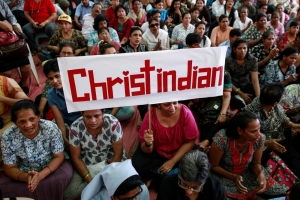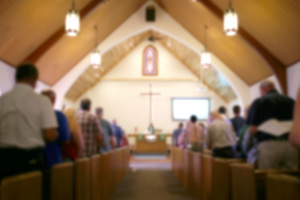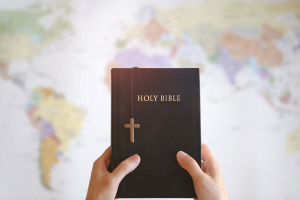St. Patrick's Day Trivia
With St. Patrick's Day right around the corner Saturday, The Christian Post has compiled a few key facts about the holiday.
Every year, St. Patrick's Day occurs on March 17 and relates to the Catholic saint with the same name. Little is known about the Irish apostle, but Saint Patrick is associated with the arrival of Christianity in Ireland.
The Catholic Church, the Anglican Church- especially the Church of Ireland, the Eastern Orthodox Church and Lutheran church observe the holiday.
March 17 sees people in communities all over the world celebrate Saint Patrick with church services, parades, dinners, parties, and festivals.
Green ribbons and shamrocks were worn in celebration of the holiday as early as the 17th century. Saint Patrick is said to have used the shamrock, a three-leaved green plant, to explain the Holy Trinity to the pagan Irish, and therefore wearing and displaying shamrocks on the occasion became common.
Today, green clothing is worn, and often Lenten restrictions are lifted on St. Patrick's Day.
The Republic of Ireland, Northern Ireland, Newfoundland and Labrador, and Montserrat view St. Patrick's Day as a public holiday, while it is widely celebrated in dozens of other countries.
It is believed that St. Patrick's Day is the most widely celebrated saint's day in the modern world, according to the St. Patrick's Day Foundation.
In the past March 17 has fallen on a day during the Holy Week. In these instances, St. Patrick's Day is officially observed on different days outside of Holy Week.
The holiday will not fall on a day during Holy Week again until the year 2160.
The first Irish parade in honor of St. Patrick took place in Dublin in 1931. Although today the holiday also has secular celebrations tied to it, St. Patrick's Day remains religious in Ireland.
Christian leaders in Ireland have voiced concerns about the non-religious celebrations that occur in the name of Saint Patrick. Friar Vincent Twomey contributed writing to The Word magazine in March 2007.
"It is time to reclaim St. Patrick's Day as a church festival," wrote Twomey, who noted that the "mindless alcohol-fuelled revelry" associated with the holiday does not "bring the piety and the fun together," according to The Irish Independent.
In the U.S., Congress proclaimed March to be Irish-American Heritage Month. The first parade for St. Patrick's Day occurred in New York City on March 17, 1762 and featured soldiers who served in the English military.
In 2008, over 36.3 million U.S. residents claimed to have Irish ancestry. There are four U.S. towns named after a shamrock- the emblem of Ireland. They include Mount Gay-Shamrock, W.Va., Shamrock, Texas, Shamrock Lakes, Ind., and Shamrock, Okla. Nine cities are named after Dublin.



























